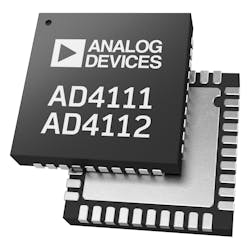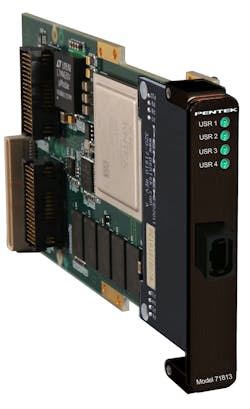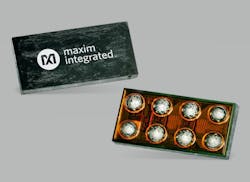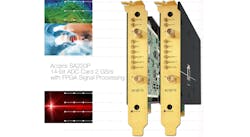Data converters are the backbone of many test and measurement instruments’ digital transition, and with more and more instruments showing high-definition information on more displays than ever, reliance on these converters continues to grow. Vendors are challenged to pack as much analog-to-digital ADC or digital-to-analog (DAC) performance as they can into such converters while minimizing form factor. Depending on the application, some data converters must be custom-made and built into an existing product, while other standalone converters can be applied across several applications.
A 2017 report by MarketsAndMarkets stated that the global data converter market was expected to grow from $3.35 billion in 2016 to $5.08 billion by 2023 at a CAGR of 6.3% from 2017-2013, with that high growth “driven by the increasing adoption of technologically advanced data acquisition systems and the rising demand for test and measurement solutions by end users.”
Here's a look at some data converter products recently put on the market.
Precision ±10V and 0-20mA A/D converters
Analog Devices (ADI) has introduced two multichannel ±10V and 0-20mA precision A/D converters that better enable implementation of programmable logic controller (PLC) andJade Architecture SOSA Aligned LVDS XMC Module with Optical I/O
Tiny, precision data converters for performance, small footprint
Texas Instruments has introduced four tiny precision data converters, and the company says each is the industry’s smallest in its class. The new data converters enable designers to add more intelligence and functionality, while shrinking system board space. The DAC80508 and DAC70508 are eight-channel precision digital-to-analog converters that provide true 16- and 14-bit resolution, respectively. The ADS122C04 and ADS122U04 are 24-bit precision analog-to-digital converters that feature a two-wire, I2C-compatible interface and a two-wire, UART-compatible interface, respectively. These new devices join a portfolio of precision ADCs and DACs optimized for a variety of small-size, high-performance or cost-sensitive industrial, communications and personal electronics applications. Mouser Electronics
3Msps, Low-Power, Serial 12-Bit ADC
The MAX19777, from Maxim Integrated, is a 12-bit, compact, high-speed, low-power, successive approximation analog-to-digital converter. This high-performance ADC includes aSA220 14-bit ADC Card, 2 GS/s
Acqiris has announced the new SA220 14-bit ADC card, the first addition to its new SA2 platform that is specifically optimized for OEM requirements. It leverages the company’s new





